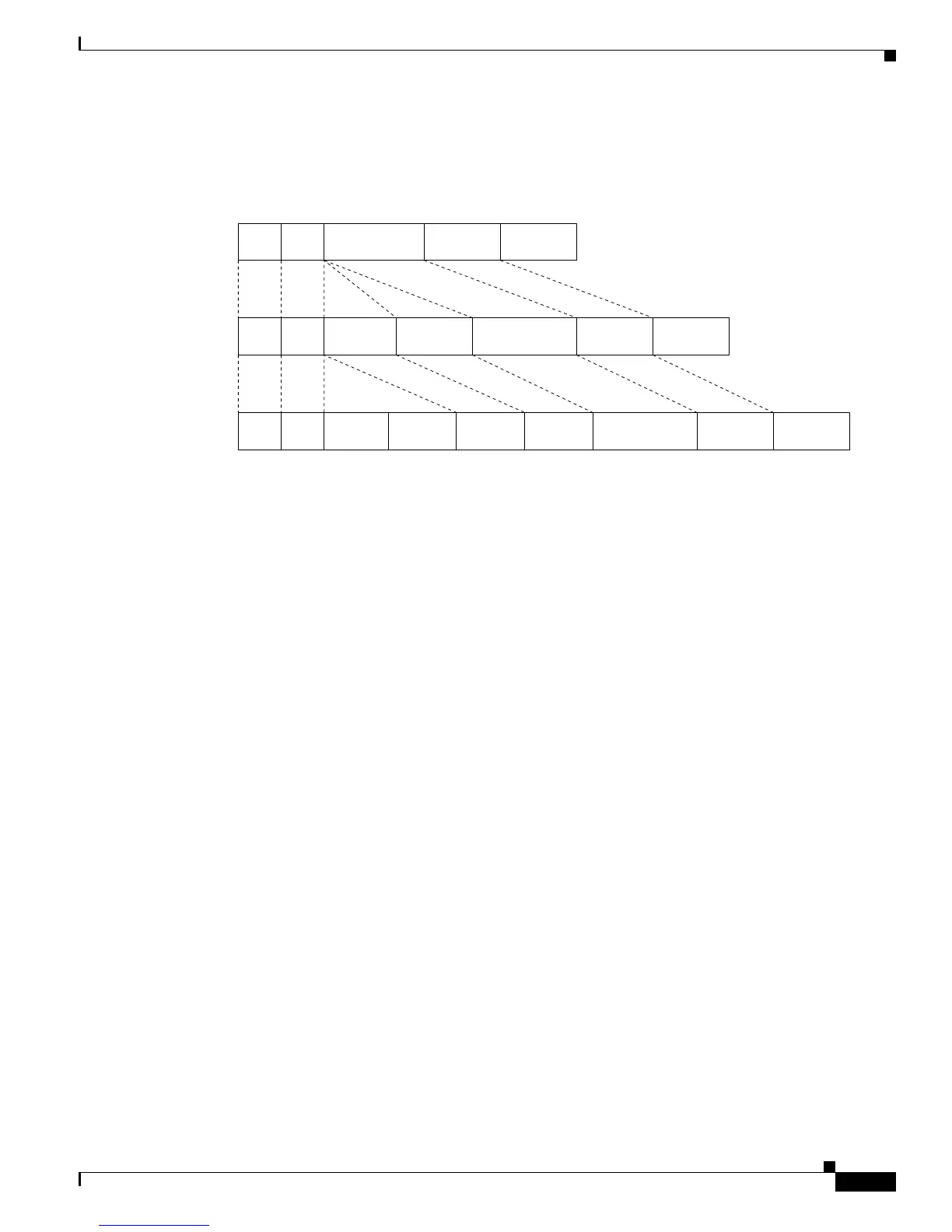19-3
Software Configuration Guide—Release 12.2(25)EW
OL-6696-01
Chapter 19 Configuring 802.1Q and Layer 2 Protocol Tunneling
Understanding 802.1Q Tunneling
Figure 19-2 Original (Normal), 802.1Q, and Double-Tagged Ethernet Packet Formats
When the packet enters the trunk port of the Service Provider egress switch, the metro tag is again
stripped as the switch processes the packet. However, the metro tag is not added when the packet is sent
out the tunnel port on the edge switch into the customer network. The packet is sent as a normal
802.1Q-tagged frame to preserve the original VLAN numbers in the customer network.
All packets entering the Service Provider network through a tunnel port on an edge switch are treated as
untagged packets, whether they are untagged or already tagged with 802.1Q headers. The packets are
encapsulated with the metro tag VLAN ID (set to the access VLAN of the tunnel port) when they are
sent through the Service Provider network on an 802.1Q trunk port. The priority field on the metro tag
is set to the interface class of service (CoS) priority configured on the tunnel port. (The default is zero
if none is configured.)
In Figure 19-1, Customer A was assigned VLAN 30, and Customer B was assigned VLAN 40. Packets
entering the edge-switch tunnel ports with 802.1Q tags are double-tagged when they enter the Service
Provider network, with the metro tag containing VLAN ID 30 or 40, appropriately, and the inner tag
containing the original customer VLAN number, for example, VLAN 100. Even if Customers A and B
both have VLAN 100 in their networks, the traffic remains segregated within the Service Provider
network because the metro tag is different. Each customer controls its own VLAN numbering space,
which is independent of the VLAN numbering space used by other customers and the VLAN numbering
space used by the Service Provider network.
Double-tagged
frame in service
provider
infrastructure
IEE 802.1Q frame from
customer network
Original Ethernet frame
Destination
address
Length/
EtherType
Frame Check
Sequence
Source
address
SADA Len/Etype Data FCS
SADA Len/Etype DataEtype Tag FCS
SADA Len/Etype DataEtype Ta g Etype Ta g FCS
74072

